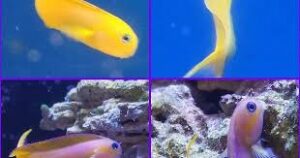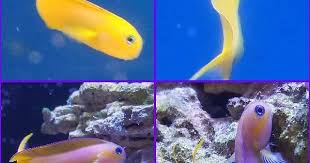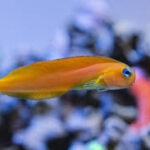Dragons and Their Connection with Other Mythical Creatures in Chinese Culture

In Chinese culture, dragons are not just creatures of myth; they are powerful, revered symbols of strength, wisdom, and good fortune. Over centuries, they have woven themselves into the very fabric of Chinese mythology, religion, and art. But dragons do not exist in isolation. They share their mythical world with a rich variety of other fantastical creatures, each carrying their own deep meanings and cultural significance. Together, these creatures form an intricate network of symbolism that reflects ancient Chinese beliefs about nature, the cosmos, and human existence.
In this article, we will explore the connection between dragons and other mythical creatures in Chinese culture. These include the phoenix, the tortoise, the Qilin, and the Bai Ze, among others. Each of these creatures plays an important role in Chinese mythology, and their relationships with dragons reveal much about ancient Chinese thought, the interplay of good and evil, and the balance of forces in the universe.
1. The Chinese Dragon: Symbolism and Characteristics
Before delving into the interactions between dragons and other mythical creatures, it is important to understand the symbolism of the Chinese dragon itself. Unlike the fierce and destructive dragons of Western mythologies, the Chinese dragon is a benevolent creature. It is a symbol of imperial power, good fortune, strength, and harmony. The Chinese dragon is often associated with the emperor, who was considered the “Son of Heaven,” and the dragon’s image was used exclusively to symbolize the emperor’s divine right to rule.
The Chinese dragon is also believed to control the forces of nature, particularly water, rain, storms, and rivers. As such, it has been seen as a symbol of the natural world and the cycle of life. In traditional depictions, the Chinese dragon is often shown as a serpent-like creature with a long, flowing body, a lion’s mane, and a pair of antler-like horns. It typically has five claws, though dragons with fewer claws are also seen, depending on the status or significance of the figure.
2. The Phoenix: The Dragon’s Complementary Counterpart
One of the most significant creatures associated with the Chinese dragon is the phoenix, known as the Fenghuang. The phoenix, like the dragon, is a powerful symbol of imperial authority and good fortune, but it also represents grace, beauty, and immortality. In Chinese culture, the phoenix is often depicted as a bird of resplendent plumage, with a combination of bird and mythical attributes.
In Chinese mythology, the dragon and the phoenix are often depicted together as complementary forces, embodying the yin-yang principle—the duality of opposites that work together in harmony. The dragon is considered the masculine force, symbolizing power, strength, and dominance, while the phoenix represents the feminine force, symbolizing beauty, grace, and gentleness.
Together, the dragon and phoenix form a symbolic duo that is often seen in imperial imagery, wedding decorations, and art. In the context of imperial China, the dragon was reserved for the emperor, while the phoenix symbolized the empress. This pairing not only reinforced the complementary relationship between the emperor and empress but also reflected the balance of power and harmony in the imperial court.
3. The Qilin: The Mythical Hoofed Creature of Peace and Prosperity
Another mythical creature closely related to the Chinese dragon is the Qilin. Often referred to as a Chinese unicorn, the Qilin is a peaceful, benevolent creature that is said to appear during times of peace and prosperity. It is typically depicted as a hooved, horned creature with the body of a deer, the tail of an ox, and hooves like a horse, covered with scales resembling a dragon’s skin.
The Qilin shares a strong connection with dragons, particularly in its role as a symbol of good omens and good fortune. Both creatures are believed to have the ability to bring harmony to the world, but the Qilin is especially known for its role in heralding the arrival of wise and virtuous rulers. According to legend, the Qilin would appear whenever an enlightened emperor was born or when a just and capable ruler was on the throne.
In addition to its peaceful nature, the Qilin is also associated with protection. In mythology, the Qilin is said to be able to walk on grass without disturbing it, symbolizing its non-violence and gentle nature. Like the dragon, it is often featured in imperial iconography as a symbol of wisdom, protection, and divine approval.
4. The Tortoise: Symbolizing Longevity and Stability
The tortoise is another important mythical creature in Chinese culture that shares a connection with dragons. Known for its association with longevity and stability, the tortoise is one of the Four Sacred Animals in Chinese mythology, along with the dragon, phoenix, and Qilin. In Chinese art and mythology, the tortoise is often depicted as a cosmic symbol, carrying the weight of the world on its back.
The relationship between the dragon and the tortoise is one of balance and stability. While the dragon is associated with the dynamic forces of nature—particularly the movement of water, wind, and rain—the tortoise represents steadfastness and longevity. Together, the two creatures embody the idea of balance between motion and stillness, highlighting the complementary nature of seemingly opposing forces in the universe.
In some versions of Chinese mythology, the tortoise and the dragon are said to be intertwined, as both are believed to have the power to influence the flow of rivers. The tortoise, being a slower and more grounded creature, offers wisdom and guidance, while the dragon represents the transformative power of nature.
5. The Bai Ze: The Dragon’s Companion in Myths of Protection
The Bai Ze is a fascinating and lesser-known creature that also shares a strong connection with dragons in Chinese mythology. Often depicted as a mythical lion-like creature with human-like features, the Bai Ze is said to possess great knowledge of supernatural creatures and the mystical arts. According to legend, the Bai Ze was an oracle that imparted valuable wisdom to the Emperor Yellow Emperor (Huang Di), teaching him how to protect his kingdom from evil spirits and other supernatural threats.
In one of the most famous myths, the Bai Ze is said to have appeared to the Yellow Emperor during a time of great peril, offering guidance on how to protect the empire by understanding the ways of the supernatural world. The Bai Ze is often seen alongside the dragon in many imperial artworks and mythological tales, and its association with the dragon underscores its role as a protector of the emperor and the realm of peace.
The Bai Ze shares a similar role to the dragon as a powerful and protective creature. However, while the dragon is more directly associated with natural forces, the Bai Ze is more tied to the supernatural realm, offering wisdom and guidance in times of conflict. In this way, the Bai Ze complements the dragon’s role, creating a partnership that extends beyond the physical realm into the metaphysical and spiritual.
6. The Interconnection of Dragons and Other Mythical Creatures
The interconnectedness of dragons with other mythical creatures in Chinese culture highlights the complex relationships between forces of nature, the cosmos, and human society. These creatures, though varied in form and symbolism, share common themes of protection, good fortune, wisdom, and balance.
The dragon often symbolizes imperial power and divine authority, while its companions—the phoenix, Qilin, tortoise, and Bai Ze—represent aspects of peace, longevity, wisdom, and protection. Together, they create a harmonious system that reflects the balance of opposing forces in Chinese cosmology.
The dragon and phoenix together represent the harmonious relationship between the emperor and empress, or the complementary forces of yin and yang. The Qilin brings peace and prosperity, while the tortoise symbolizes longevity and stability. The Bai Ze offers supernatural wisdom and protection against malevolent forces. In this way, these mythical creatures work together to form a complete system of cosmic balance, ensuring the well-being and stability of the natural and human realms.
Conclusion
Dragons in Chinese culture are powerful, multifaceted symbols, and their relationships with other mythical creatures further deepen their significance. From their complementary relationship with the phoenix to their partnership with the Qilin, tortoise, and Bai Ze, the dragon represents more than just a force of nature; it is a symbol of cosmic balance, imperial authority, and the harmony between different forces in the world. Through their shared symbolism, these creatures offer profound insights into ancient Chinese beliefs about nature, power, and the universe. Together, they form a tapestry of meaning that continues to inspire and captivate the imagination, both in China and around the world.


